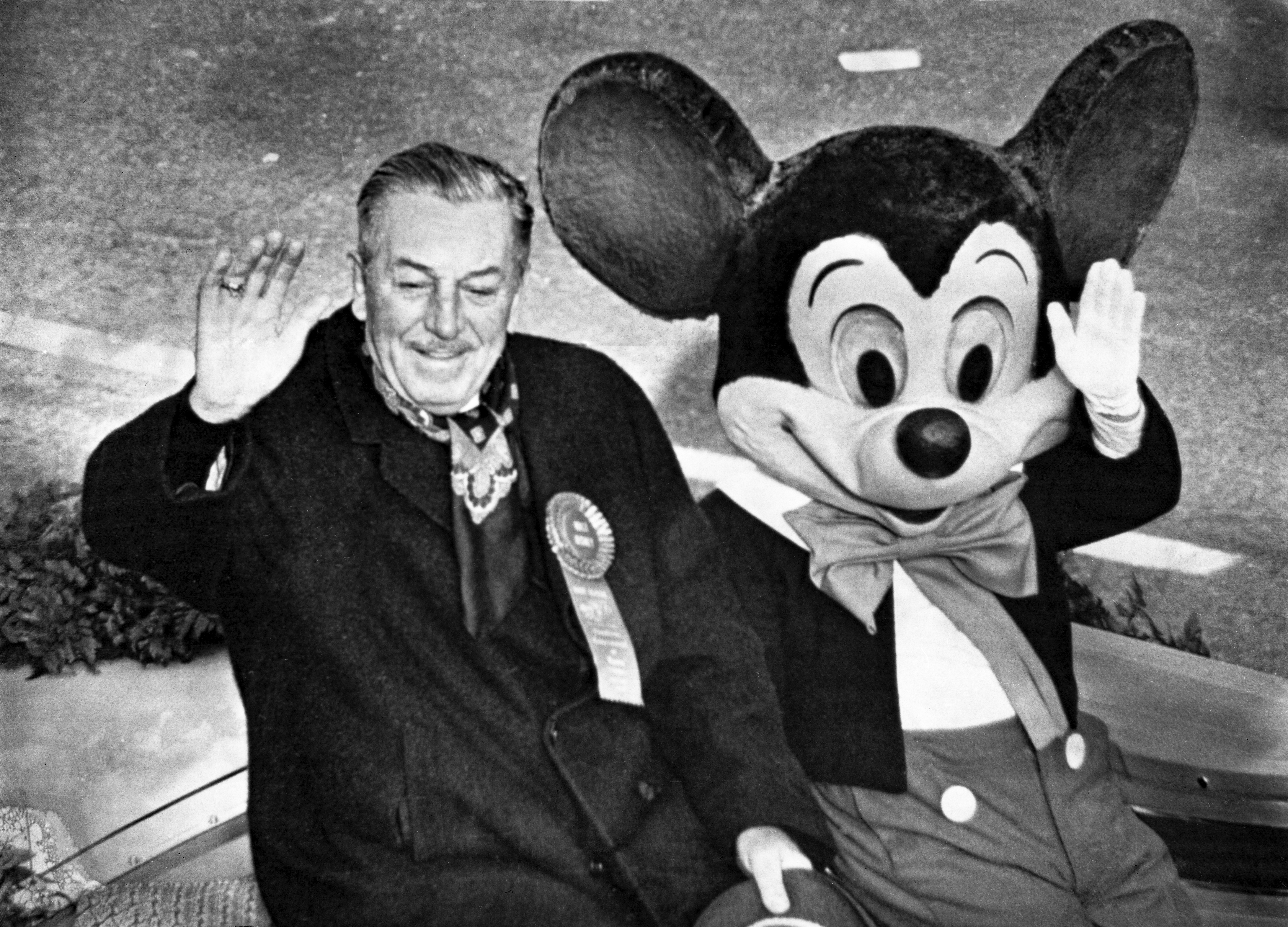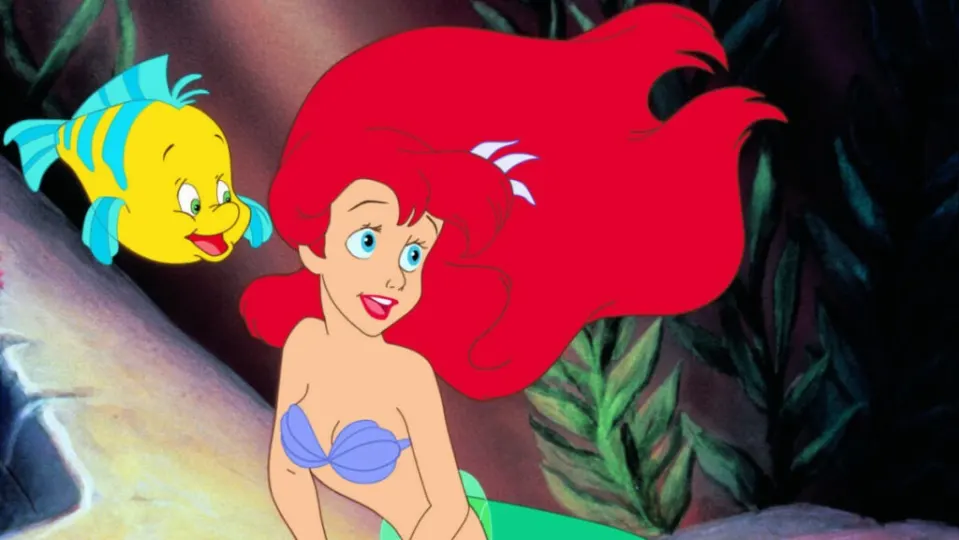The Little Mermaid has just been released in theaters. The live-action remake of the Disney film has arrived worldwide and the reviews, despite the controversies and controversies that the film has been the protagonist of for months, are quite positive. Some even believe that it is the best adaptation of the Disney classics to the big screen, so the hype is sky-high.
Undoubtedly, Rob Marshall’s film has put the mermaid, who has become one of the most popular animated princesses in the world, back on the map. But no matter how successful this new adaptation is, it will never be as successful for Disney as the original 1989 film was. Because yes, believe it or not, The Little Mermaid saved the studio from one of its worst moments in history.
The crisis that almost ended Disney
On December 15, 1966, the entertainment world suffered a great loss with the death of one of its greatest visionaries: Walt Disney. The founder of The Walt Disney Company left behind a legacy of creativity and innovation that transformed the film and entertainment industry. However, Walt’s departure also left an insurmountable void at the heart of the studio, triggering a crisis that tested Disney’s survival and future.
As much as they had tried to avoid it for years, Disney was its founder’s company…and no one else’s. Walt was known for his unwavering dedication, bold vision and ability to inspire and lead his team. Thus, his sudden demise left the studio without its main creative and strategic driver.
This absence had a profound impact on the morale and direction of the studio. After Walt’s death, the company found itself in a situation where it lacked strong leadership and a clear vision for the future. Although his brother Roy O. Disney took over as chairman and CEO, he did not have the same creative vision and charisma that characterized Walt. The lack of clear succession and compelling leadership led to a sense of uncertainty and disorganization at the studio.

The Walt Disney Company had many new animated film and theme park ideas to bring to fruition, but a lack of decision making led to a crisis that lasted for decades. Films of the time, such as The Jungle Book and The Aristocats, were criticized for departing from the style and narrative characteristic of Disney animated films.
To make matters worse, the live-action films they began to make moved completely away from the Disney spirit. Quality was lost and they tried to innovate in every possible way with family movies of different styles. But, unfortunately, it was clear that the magic that characterized the studio had been lost.
In addition, during this turbulent period, Disney also faced the threat of a possible hostile takeover. Outside companies showed interest in acquiring the studio and exercising control over its operations. This uncertainty threatened Disney’s financial and creative stability, adding additional pressure to the already difficult situation following Walt’s death. The studio had to struggle not only to maintain its identity and vision, but also to survive financially.

The Little Mermaid: the revival of magic
In this context, they tried dozens of strategies over the decades that never quite worked. But in the late eighties, the key to what they needed came: basically, they had to return to their roots. Thus, Disney gave the green light to The Little Mermaid, a film directed by John Musker and Ron Clements that sought to recover the magic of stories like Cinderella or Snow White and the Seven Dwarfs.
After too many years of doing poor box office, the company grossed over $200 million from an investment of $40 million, but only the tip of the iceberg that was to come. Thanks to its success, the film gave way to many others that still surpassed its numbers. Beauty and the Beast grossed 424 million, Aladdin more than 500 million and The Lion King came close to reaching 1 billion. The 1990s were undoubtedly the best era for film animation to date, and Disney’s return to its origins was to blame.

The Little Mermaid was not the pinnacle of feminism. It was evident that behind the film were dozens of men deciding which way the story should go. Even so, Disney knew that they were not in the fifties. Now, the protagonist was a real fighter, someone trapped and demanding freedom. With a darker setting than the studio’s previous films, The Little Mermaid offered a mature point of view that fit perfectly with the times the industry was in.
Based on a fairy tale by Hans Christian Andersen, The Little Mermaid was one of the first projects Walt Disney thought of directing. Along with other classic tales based on mythology, the Disney creator had planned a series of short films that sought to transfer the imaginary of folk tales to animation. However, the sheer difficulty of Snow White and the Seven Dwarfs caused this project to be delayed indefinitely. More than thirty years had to pass before director Ron Clements rediscovered the original story and proposed to the studio to direct this film.
:quality(80)/cloudfront-us-east-1.images.arcpublishing.com/lanacionar/PP763JIWWBDVFEHK7SXZ7CEXVM.jpg)
At the time, Jeffrey Katzenberg and Michael Eisner – chairman of Walt Disney Studios and CEO, respectively – functioned as a duo whose goal was to return Disney to the top of the industry. Clements, who had already been working at Disney for nearly a decade, presented a two-page outline summarizing the story and explaining the importance of the marine world in which it would be set. Although he had a hard time getting the project accepted, since at the time they were developing the sequel to Splash (1984), another film about mermaids, Disney ended up approving the idea, considering the sketch “extraordinary”.
The Little Mermaid hit the big time on March 26, 1990. That day it won two Oscars, specifically for best song (Under the Sea) and best soundtrack. Despite the fact that only its musical status was awarded, the critics were full of praise for the film. At last, the production company had found a path on which they could continue to chart their trajectory. So, for the next ten years, all the ingredients they included in The Little Mermaid were exploited until their formula was exhausted.

After returning to the top thanks to The Little Mermaid, Disney went back to rummage through its drawer in search of projects that were not carried out at the time. Thus they found Beauty and the Beast, a French fairy tale that Walt wanted to adapt twice. First during the thirties, as an alternative Snow White and the Seven Dwarfs and as one of the short films of the anthology in which The Little Mermaid was also going to participate. And later in the fifties, when some sketches were made that ended up being discarded for ideas such as Cinderella or Alice in Wonderland.
With the nineties came the ideal moment to resume the project, and the first to realize it was Richard Purdum, animator of Hercules and Fantasia 2000. Purdum proposed the film as a drama away from the musical, but the success of The Little Mermaid would not be understood without the music and the humor of some of its characters, so Disney executives decided to give it a more similar tone to his last film. Undoubtedly, it had set a trend that would mark the rest of the projects until today.

Some of the links added in the article are part of affiliate campaigns and may represent benefits for Softonic.


